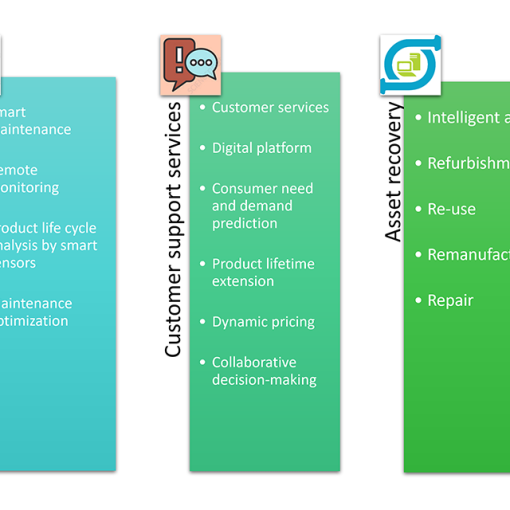Work in the health sector and people’s self-care will change a lot in the next few years. The reason for this is the development of eHealth services. In the future different virtual and remote environments will dominate health services. (Sitra, 2019.) We can already contact a doctor by chat or video call, and Kanta.fi is the place where we can see our health information. The question is: What eHealth services will be used in the future? How much will eHealth affect people’s self-care?
Electronic services and nursing
Social and health care in Finland is currently facing many challenges and one of them is digitalization. Using different eHealth services is more common than before. Concretely, nurses and doctors will use many varieties of electronic services, such as Terveyskylä’s service called Päivystystalo. The service is a network of specialized medical care created in cooperation with patients and it offers services like self-care services and guidance and in the future also the possibility of electronic communication with a nurse or doctor. These services are planned to be a part of nursing, not replacing them. (Terveyskylä, 2017).
At the start we need to figure out if we have enough skills to use this kind of services in health care. Technology is evolving all the time and it would be very important for nursing education to evolve with it. In fact, the Ministry of Education and Culture is funding a project called SotePeda 24/7. It focuses specifically on getting a technology change, in cooperation with the Information Technology industry. (Buure, Hinkkanen & Rekola, 2019).

Electronic self-care
At the moment it is already possible to treat illnesses, promote health and monitor health trough electronic services. In the future electronic self-services will be expanding with applications downloaded to the smartphone and to the development of new internet services. We are motivated in observing and taking better care of our own health, and we are interested in our own care process and want to influence on it. When more and better e-services are provided alongside healthcare in the future, it will motivate us to pay more attention to our own health. The purpose of electronic self-care is to make people´s lives easier and help them take care of they own health. (Sitra, 2019). Self-care services must meet users’ needs and be as easy to use as possible. While online services are on the rise, it is still important to have face-to-face appointments, as they support online self-care monitoring. (Saarelma, 2017).
Summary
Technological developments, digitalization and changes in population are changing our daily lives rapidly. Therefore, the structures of society, the services we use and the ways we participate must also be renewed. (Halenius & Suomalainen, 2019.) In the future, all citizens will have access to an on-call emergency service package built by on-call service professionals around Finland (Terveyskylä, 2017.) Utilization of e-health services and technology will also be an increasingly important part of the nurses’ work in the comprehensive and multidisciplinary care of clients. Citizens’ online self-care services and home diagnoses on computers and smartphones are changing the way how citizens and professionals work. However, the use of e-health and technology must not impair the quality of service, social interaction and human factors. (Sairaanhoitajat, 2016.)
Authors
Janita Harinen, Pinja Juvonen, Noora Keränen, Minna Leirimaa, Anu Reijonen and Tea Vihelmaa are nursing students from the course called Customership and Guidance in New Environment.
Anna Romakkaniemi is a Senior Lecturer in nursing at LAB University of Applies Sciences
References
Buure, T., Hinkkanen, L., Rekola, L. 2019. Vastaako koulutus sosiaali-ja terveydenhuollon tulevaisuuden haasteisiin? Metropolia [Cited 20.11.2019]. Available at: https://blogit.metropolia.fi/tikissa/2019/04/02/vastaako-koulutus-sosiaali-ja-terveydenhuollon-tulevaisuuden-haasteisiin/
Halenius, L., Suomalainen, K. 2019. Suomi voi toimia datatalouden suunnannäyttäjänä-Sitran tiekartta tarjoaa tähän eväät. Sitra [Cited 23.11.2019]. Available at: https://www.sitra.fi/uutiset/suomi-voi-toimia-datatalouden-suunnannayttajana-sitran-tiekartta-tarjoaa-tahan-evaat/
Saarelma,
O. 2017. Omahoito sähköistyy. Terveyskirjasto [Cited 20.11.2019]. Available at:
https://www.terveyskirjasto.fi/terveyskirjasto/tk.koti?p_artikkeli=kol00408&p_listatyyppi=kol
Sairaanhoitajat. 2016. Sähköisten palveluiden strategia käytännön työvälineeksi [Cited 23.11. 2019] Available at: https://sairaanhoitajat.fi/2016/sahkoisten-palveluiden-strategia-kaytannon-tyovalineeksi/
Sitra. 2019. Omahoito [Cited 8.11.2019]. Available at: https://www.sitra.fi/aiheet/omahoito/
Terveyskylä. 2017. Päivystystalo – tulevaisuuden sähköiset palvelut päivystyspotilaalle [Cited 13.11.2019]. Available at: https://www.terveyskyla.fi/ajankohtaista/p%C3%A4ivystystalo-%E2%80%93-tulevaisuuden-s%C3%A4hk%C3%B6iset-terveyspalvelut-p%C3%A4ivystyspotilaalle




